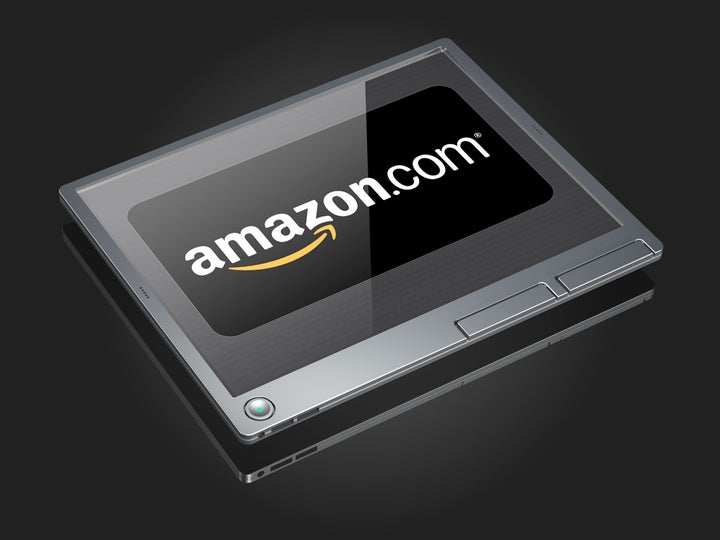
Many were surprised when Amazon recently announced its purchase of Whole Foods for $13.7 billion. Those that love Amazon applauded the move while those that fear, or dislike, Amazon are using it to confirm their prediction of its “big-brother” takeover of the world.
Competitors to prevent a complete takeover
Of course, those that fear Amazon should take notice that Amazon has some formidable rivals – Apple, Facebook, and Google, which have their own growing eco-systems that are enveloping bigger and bigger chunks of commerce. Based on its recent resurgence under Satya Nadella, many would include Microsoft to this group. And if you include international players, Chinese Internet giant, Alibaba, should be added to the list of dominant competitors. Going back to the pre-digital world, people had similar concerns about General Motors and big Oil companies, such as Exxon Mobil.
The writing has been on the wall
Anyone that has been surprised by Amazon’s move to buy Whole Foods has not been noticing the writing on the wall for some time. Amazon started out as an online bookstore. The name was a curious choice for a bookstore. Many didn’t notice this because the company started in the “dot.com bubble” days when “interesting” names, such as Yahoo!, were in vogue. If you think about the branding more deeply, however, you might notice that the name “Amazon” relates to a lot of things – mostly big and powerful. In Greek Mythology, the Amazons were women warriors that were warlike and aggressive. The Amazon River and rainforest are vast and powerful. If you look at Amazon’s logo, it has an arrow pointing from the “a” to the “z” – not-so-subtly implying Amazon wants to sell you everything.
From online bookstore to world’s biggest retailer
Most think of Amazon as an online retailer since the company branded itself that way and lots of us buy products from Amazon on their e-Commerce Web site. Amazon recently passed Walmart as the world’s biggest retailer (note: some dispute this claim when Alibaba in included). Unless you need to touch, feel, and try on the merchandise, Amazon is perhaps the most convenient place to find and buy products ever invented. Marketers know that the primary added-value function of distribution is convenience. That’s not all. Buyers can use the site to read reviews, receive suggestions, and comparison shop for better prices. With increasing disincentives to go to physical stores - traffic, parking, wasted time, and opportunity costs, Amazon has gained the upper hand as more and more people feel comfortable buying online. However, since Amazon offers ultra competitive prices on small margins, it typically loses money on small orders. Offering Prime pre-paid membership is an attempt to dampen these losses.
Generating sales is not the same as making money
Because of its miniscule margins, Amazon went a very long time - over 20 years without making real money. Jeff Bezos, and his shareholders, were amongst the most patient people in the world. That patience has paid off since Amazon surpassed Berkshire Hathaway and Exxon Mobile as the 4th most valuable company in the world after Apple, Alphabet (Google), and Microsoft. How did Amazon do it?
Much more than e-commerce
Widening out its original focus, Amazon has expanded into many other businesses. A partial list is summarized below:
Artificial Intelligence: Amazon created the Alexa artificial intelligence platform and Dot digital assistant.
Banking: Prime members receive discounts if they use Amazon Prime branded debit and credit cards.
Cloud computing: While continuing to grow its other businesses, what seems to be contributing the most to its profits is Amazon Web Services, or AWS. Started in 2006, this part of Amazon has consistently grown to capture a dominant 45% share of the cloud computing infrastructure market – greater than Microsoft, Google, and IBM combined. Using a rule of thumb devised by the Boston Consulting Group (companies that have ≥ 20% market share are almost always profitable), it seems that Amazon’s initiatives in cloud computing and its other B2B activities are likely to continue to pay off handsomely.
Entertainment: Amazon has created award-winning original TV and movie content, sells digital music and video, and offers a streaming music service. Prime members receive free or discounted content.
Logistics: Amazon has developed a Prime Air drone delivery service, which it is testing. In addition to delivering goods ordered from Amazon, Prime Air will deliver people and goods to and from Airborne Fulfillment Centers (AFCs), which are flying warehouses for which Amazon has filed a patent. It is also talking about delivering goods via autonomous trucks once they are allowed.
Manufacturing: To facilitate purchases of books and other products on its Web site, Amazon introduced the Kindle e-Book reader. It has since added products such as the Echo high quality table-top speaker and the Tap portable bluetooth speaker.
Retail: Amazon has opened bricks and mortar bookstores and checkout-free grocery stores branded as Amazon Go. While many are confused as to why the e-Commerce giant would open physical stores, it makes a lot of sense if you understand the a-to-z branding and possible distribution economies. Moreover, nothing replaces a physical store for seeing, feeling, and “trying on” the merchandise. With physical stores, Amazon has widened out its distribution channels, and will give online rivals, such as Alibaba, a run for their money.
Technology: Amazon has received a patent for a technology to identify and counter in-store price comparisons via mobile devices. This should provide a disincentive for people to leave an Amazon store to buy products at lower prices elsewhere.
Getting back to Whole Foods
Adding the Whole Foods chain to its Go grocery stores and Fresh delivery service enables Amazon to create greater buyer convenience options and grocery distribution economies. It also allows Amazon to proliferate its “Go” convenience concept to other retail outlets. Just as Uber eliminated some of the inefficiencies with summoning cabs, Amazon is taking away the inconvenience of waiting in line and paying for groceries and retail goods. By giving buyers online, bricks and mortar, and delivery options along with discounts and other benefits associated with Prime membership, Amazon is doing its best to become the one-stop for virtually everything. It’s creating a scalable ecosystem that gives consumers convenience and choice. Will it be a “big brother” takeover of the universe? Not likely if Apple, Alibaba, Facebook, Google, Microsoft, and possible future competitors have anything to say about it.
